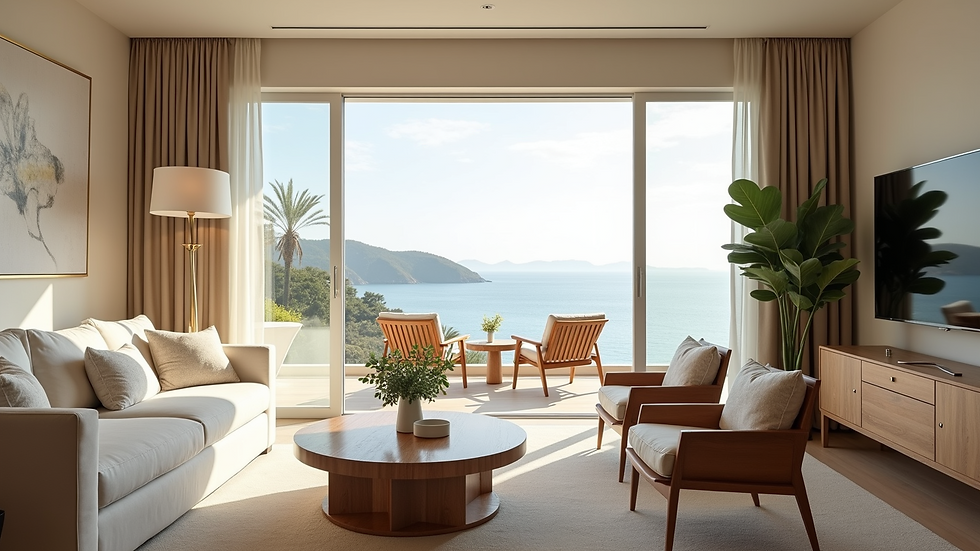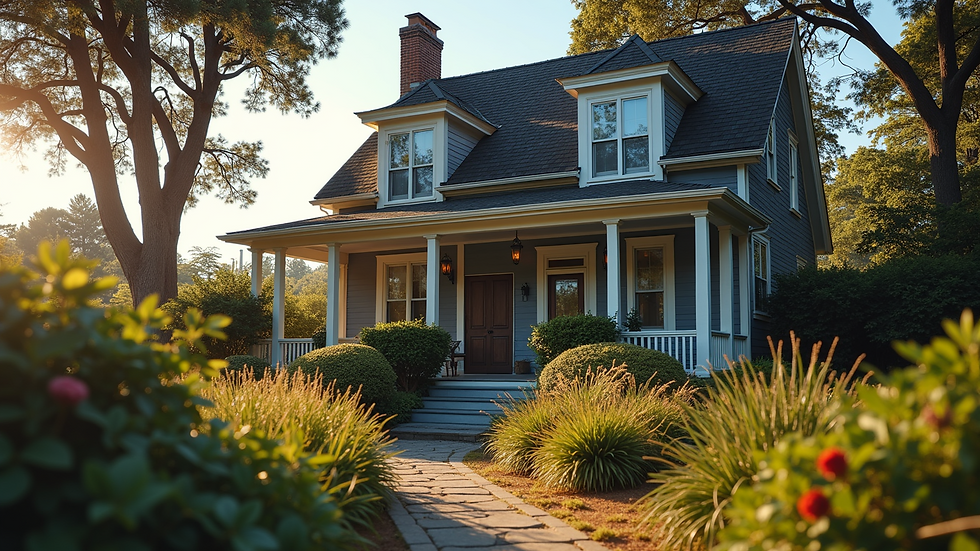Exploring the Beauty of Modern Traditional Architecture
- Braulio Gonzalez
- Oct 10
- 4 min read
In the realm of luxury residential design, the fusion of timeless elegance and modern sensibility creates a captivating narrative. This narrative is beautifully embodied in the artful balance of contemporary classic design principles. It is a language of architecture that speaks to those who appreciate refined aesthetics, thoughtful craftsmanship, and a seamless dialogue between past and present. As I reflect on this harmonious blend, I find myself drawn to the subtle sophistication that defines this style—a style that elevates living spaces into serene sanctuaries of comfort and grace.
Embracing Contemporary Classic Design Principles
At the heart of contemporary classic design lies a commitment to balance and proportion. This approach honors the enduring appeal of traditional forms while embracing the clean lines and open spaces that modern living demands. The result is a design ethos that feels both familiar and fresh, inviting a sense of calm and order.
One of the most compelling aspects of this design philosophy is its versatility. It allows for the integration of luxurious materials such as rich hardwoods, natural stone, and bespoke millwork, all while maintaining an uncluttered aesthetic. The interplay of light and shadow is carefully considered, with large windows and thoughtfully placed lighting fixtures enhancing the architectural details without overwhelming them.
In practice, this means spaces that are both functional and beautiful. For example, a grand foyer might feature classic wainscoting paired with sleek, contemporary lighting. Living areas often showcase a neutral palette punctuated by textured fabrics and elegant furnishings that nod to tradition without feeling dated.

For those seeking to incorporate these principles into their homes, I recommend focusing on quality over quantity. Select a few statement pieces that resonate with your personal style and allow them to shine. Avoid overcrowding rooms with excessive ornamentation; instead, let the architecture and carefully chosen details tell the story.
The Role of Materials and Craftsmanship in Contemporary Classic Design
Materials are the silent storytellers in any architectural endeavor. In contemporary classic design, they are chosen not only for their beauty but also for their ability to age gracefully and contribute to the home's overall narrative. Natural materials such as marble, oak, and linen are favored for their tactile qualities and timeless appeal.
Craftsmanship plays an equally vital role. The meticulous attention to detail in joinery, molding, and finishes elevates the space beyond mere decoration. It is this dedication to artisanal skill that imbues a home with character and authenticity.
Consider the example of a custom-built staircase. Rather than opting for mass-produced components, a staircase crafted by skilled artisans can become a focal point, showcasing elegant balusters and a hand-turned newel post. Such elements create a sense of permanence and bespoke luxury that resonates deeply with discerning homeowners.

When selecting materials and finishes, I advise prioritizing those that complement the home's architectural style and the surrounding environment. For coastal residences, for instance, materials that withstand humidity and salt air while maintaining their aesthetic integrity are essential.
What are the Three Styles of Architecture?
Understanding the foundational styles that influence contemporary classic design enriches our appreciation of its nuances. Broadly speaking, architecture can be categorized into three primary styles: traditional, modern, and transitional.
Traditional Architecture: Rooted in historical design, this style emphasizes symmetry, ornate details, and classic proportions. It often features elements such as columns, cornices, and decorative moldings.
Modern Architecture: Characterized by minimalism, open floor plans, and the use of industrial materials like steel and glass. It prioritizes function and simplicity over ornamentation.
Transitional Architecture: A harmonious blend of traditional and modern elements, transitional style bridges the gap between the two. It incorporates the warmth and detail of traditional design with the clean lines and open spaces of modernism.
The beauty of contemporary classic design lies in its ability to draw from these styles selectively, crafting spaces that feel both timeless and current. This approach allows for personalized expressions of luxury that resonate with individual tastes and lifestyles.

Integrating Modern Traditional Architecture into Coastal Luxury Homes
In the context of Southern California's coastal environment, the integration of modern traditional architecture offers a unique opportunity to create homes that are both elegant and attuned to their surroundings. The coastal climate and landscape inspire designs that emphasize natural light, indoor-outdoor flow, and materials that echo the textures of the sea and sand.
For instance, expansive windows and sliding glass doors invite the ocean breeze and panoramic views inside, while shaded verandas and pergolas provide comfortable outdoor living spaces. The color palette often reflects the coastal environment—soft whites, sandy beiges, and muted blues—enhancing the sense of tranquility.
Incorporating traditional architectural details such as shiplap walls, exposed beams, and classic trim work adds depth and character. These elements, when paired with modern amenities and open layouts, create homes that are both inviting and sophisticated.
For those embarking on such a project, collaboration with a design firm experienced in this niche is invaluable. They can guide the selection of materials, finishes, and spatial arrangements that honor the coastal context while fulfilling the client's vision for luxury and comfort.
Crafting Personalized Spaces with Timeless Appeal
Ultimately, the allure of contemporary classic design and modern traditional architecture lies in their capacity to reflect the unique stories and preferences of their inhabitants. Every detail, from the curve of a staircase to the texture of a fabric, contributes to a cohesive narrative that is both personal and enduring.
In my experience, the most successful luxury homes are those where design serves the lifestyle of the residents. This means creating spaces that are not only visually stunning but also intuitively functional. Thoughtful storage solutions, flexible living areas, and seamless transitions between indoor and outdoor spaces enhance daily living.
I encourage those considering this style to approach the process with patience and openness. Engage deeply with your design team, explore a variety of inspirations, and remain true to your aesthetic sensibilities. The result will be a home that stands as a testament to refined taste and thoughtful design.

In embracing contemporary classic design principles, one embarks on a journey that honors tradition while embracing the future. It is a journey that transforms houses into homes—spaces of beauty, comfort, and lasting value.

Comments